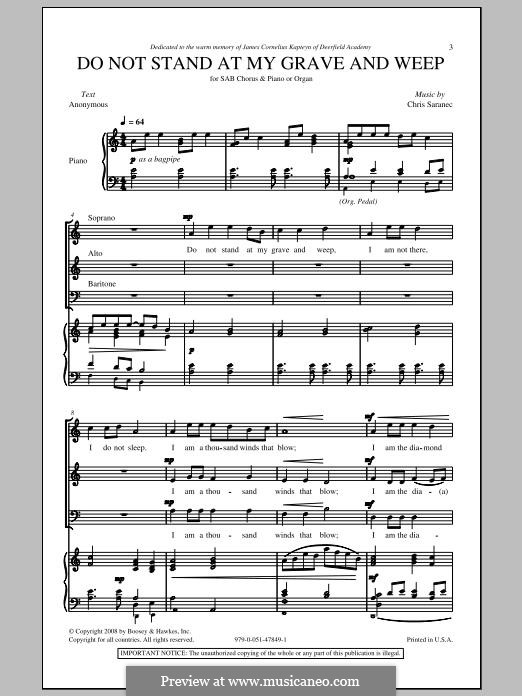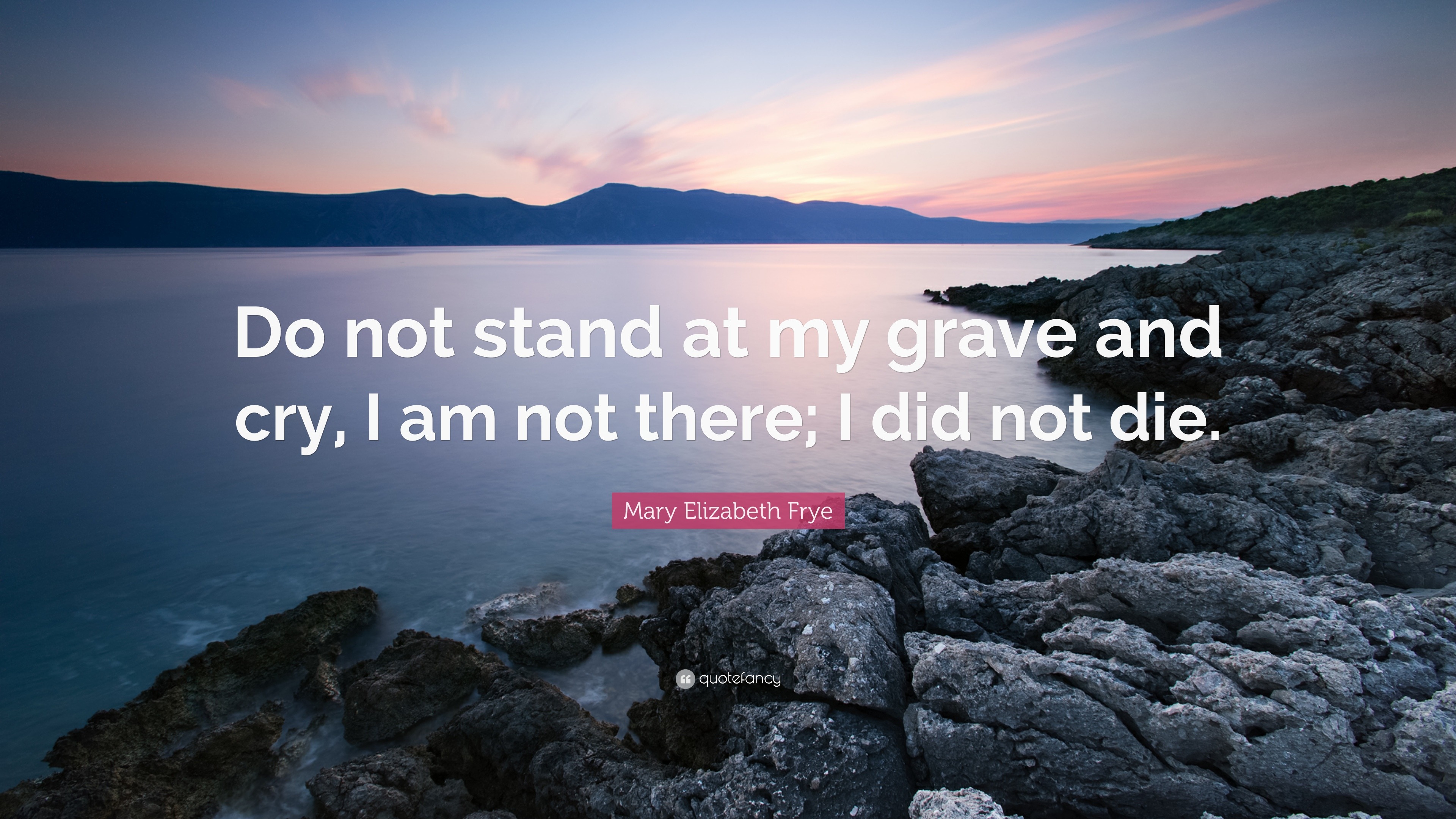
Her obituary in The Times made it clear that she was the undisputed author this famous poem, which has been recited at funerals and on other appropriate occasions around the world for seventy years. She wrote other poems, but this, her first, endured. Because she never published or copyrighted it, there is no definitive version. “Mary Frye circulated the poem privately. When her mother died, she told Mary Frye she had not had the chance to stand by her mother’s grave and weep. When you awaken in the morning’s hush I am the swift uplifting rush Of quiet birds in circling flight. I am a thousand winds that blow, I am the diamond glints on snow, I am the sun on ripened grain, I am the gentle autumn rain. The rise of Anti-Semitism had made it unwise for her to join her mother. Do not stand at my grave and weep, I am not there I do not sleep. Margaret Schwarzkopf had been worrying about her mother, who was ill in Germany. She wrote it down on a brown paper shopping bag. She had never written any poetry, but the plight of a German Jewish girl, Margaret Schwarzkopf, who was staying with her and her husband, inspired the poem. Mary Frye, who was living in Baltimore at the time, wrote the poem in 1932.

“Mary Elizabeth Frye nee Clark was born in Dayton, Ohio, on November 13th 1905. The following was taken from The London Magazine December / January 2005: Others claim it is a Navajo burial prayer. Fry and Marianne Reinhardt, and more recently to Stephen Cummins, a British soldier killed in Northern Ireland who left a copy for his relatives.

Wiggins (an English ‘migr’ to America), two Americans: Mary E. Written at least 50 years ago, this poem has been attributed at different times to J.T.


 0 kommentar(er)
0 kommentar(er)
